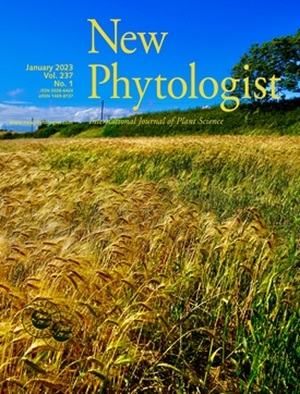Shifting spring ephemeral pollination windows under climate change - a three-body problem.
IF 8.3
1区 生物学
Q1 PLANT SCIENCES
引用次数: 0
Abstract
Potential and realized climate change-driven phenological mismatches have been reported across a variety of pairwise species' interactions. However, species often engage in more than one type of temporally structured interaction - therefore, the consequences of phenological shifts must be evaluated in this context. Synthesizing data from natural history collections, community science initiatives, and remote-sensing platforms, we analyzed the phenology of the flowering of an understory spring ephemeral species, the emergence of its specialist pollinator, and the closure of the canopy above. We determined how variation in phenological responses to climate across these interacting guilds impacts the potential pollination window of the spring ephemerals. We demonstrate that phenological responses to climate change can vary greatly among the three guilds across their interacting range. The potential pollination window was predicted to undergo divergent shifts among ecoregions across the landscape in the near future, which can impact the fitness and reproductive success of both flowers and pollinators. Our study represents a first step toward integrating phenological knowledge across multiple interacting guilds. Expanding such efforts will be critical to improving our ability to predict how ecosystems, communities, and the ecological interactions therein will be impacted by global change.气候变化下春季短暂授粉窗口的变化——一个三体问题。
在各种成对物种的相互作用中,已经报道了潜在的和已经实现的气候变化驱动的物候错配。然而,物种经常参与不止一种时间结构的相互作用,因此,物候变化的后果必须在这种情况下进行评估。综合自然历史资料、社区科学研究和遥感数据,分析了一种林下春季短暂物种的开花物候、传粉媒介的出现和冠层闭合。我们确定了这些相互作用的行会对气候的物候响应变化如何影响春季蜉蝣的潜在授粉窗口。研究表明,在它们相互作用的范围内,三个行会对气候变化的物候响应可能存在很大差异。预计在不久的将来,潜在的授粉窗口在景观的生态区域之间会发生不同的变化,这可能会影响花和传粉者的适应性和繁殖成功率。我们的研究代表了在多个相互作用的行会之间整合物候知识的第一步。扩大这种努力对于提高我们预测生态系统、群落及其生态相互作用将如何受到全球变化的影响的能力至关重要。
本文章由计算机程序翻译,如有差异,请以英文原文为准。
求助全文
约1分钟内获得全文
求助全文
来源期刊

New Phytologist
生物-植物科学
自引率
5.30%
发文量
728
期刊介绍:
New Phytologist is an international electronic journal published 24 times a year. It is owned by the New Phytologist Foundation, a non-profit-making charitable organization dedicated to promoting plant science. The journal publishes excellent, novel, rigorous, and timely research and scholarship in plant science and its applications. The articles cover topics in five sections: Physiology & Development, Environment, Interaction, Evolution, and Transformative Plant Biotechnology. These sections encompass intracellular processes, global environmental change, and encourage cross-disciplinary approaches. The journal recognizes the use of techniques from molecular and cell biology, functional genomics, modeling, and system-based approaches in plant science. Abstracting and Indexing Information for New Phytologist includes Academic Search, AgBiotech News & Information, Agroforestry Abstracts, Biochemistry & Biophysics Citation Index, Botanical Pesticides, CAB Abstracts®, Environment Index, Global Health, and Plant Breeding Abstracts, and others.
 求助内容:
求助内容: 应助结果提醒方式:
应助结果提醒方式:


